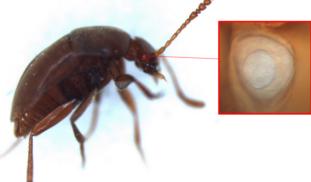Please wait...
About This Project
My undergraduate student Sonya Royzenblat and I will track the well being of the cave beetle Ptomaphagus hirtus at different ambient temperatures to determine the temperature range at which this species can be cultured most efficiently. Besides boosting our studies of its enigmatic visual system in the lab, this insight will help to understand its dispersal limits in the cave environment, and to predict possible changes in response to global warming.

Browse Other Projects on Experiment
Related Projects
How do polar bears stay healthy on the world's worst diet?
Polar bears survive almost entirely on seal fat. Yet unlike humans who eat high-fat diets, polar bears never...
Uncovering hidden insect diversity associated with a likely undescribed gall-forming midge
Does a likely undescribed species of gall-forming midge (pers. comm. Ray Gagné) on Eriodictyon plants (Yerba...
Macrofungi of the California archipelago
The eight islands of the California Archipelago are a well-studied biodiversity hotspot — but we know almost...





